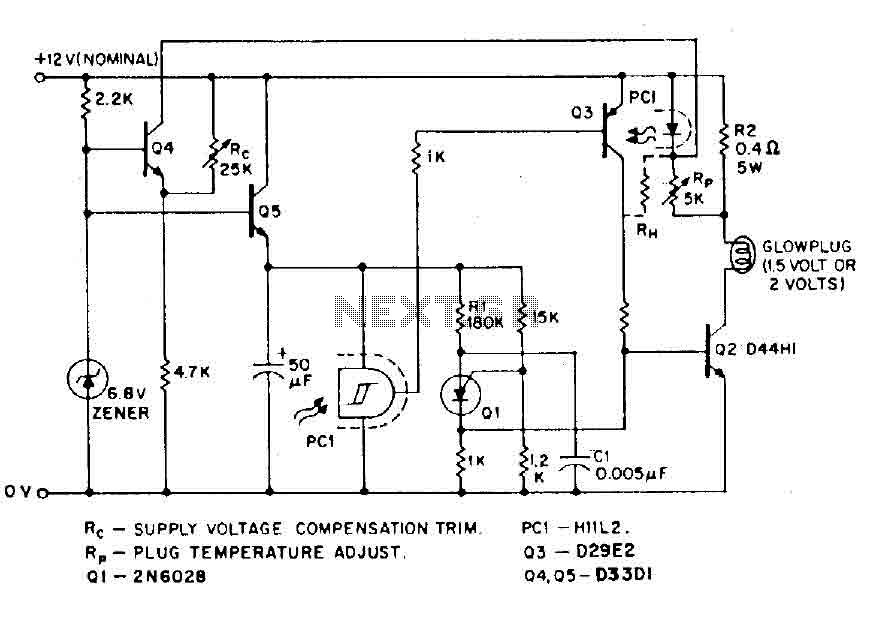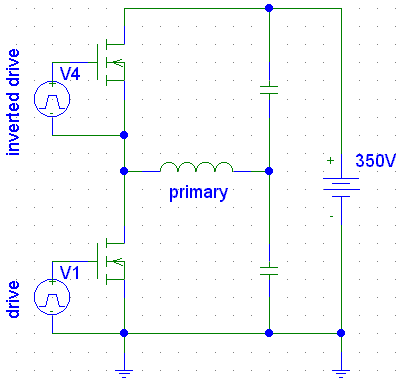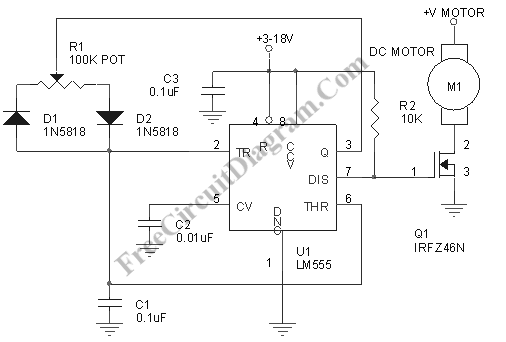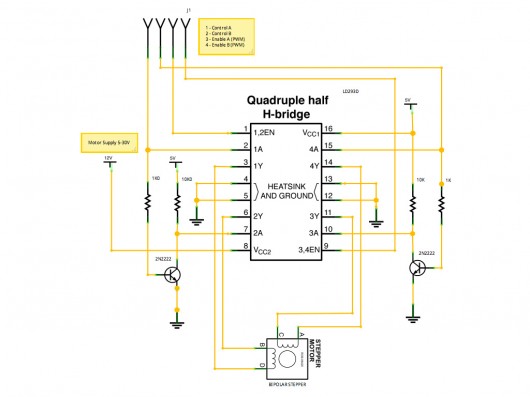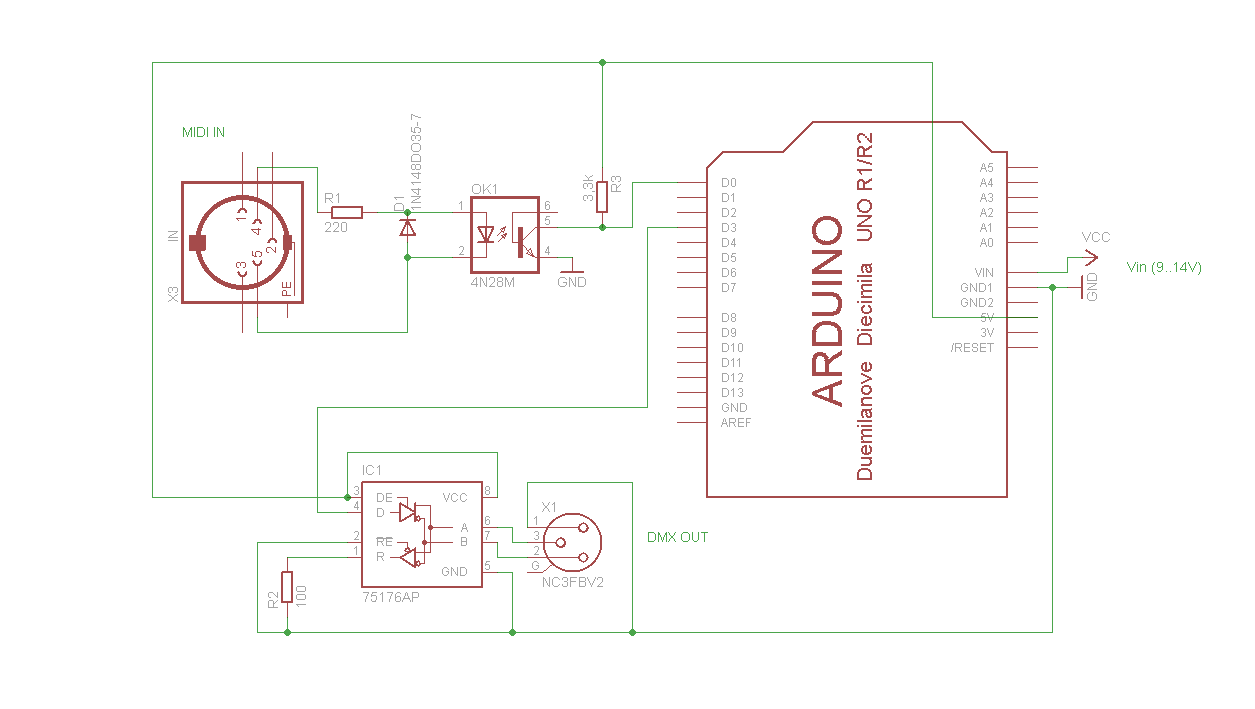
Flashlight circuit diagram of a motor control model

In the absence of light, photocells PC1 and PC2 exhibit high resistance, causing transistors Q1 and Q2 to remain off, which prevents the relay contacts K1 and K2 from closing. The battery B3 is connected through a potentiometer Rs, creating a partial pressure across relay K3 and batteries B1 and B2, which are in series with the motor. Due to the reverse polarity, no current flows through resistor R3, preventing K3 from activating and keeping the motor stationary. When light from a flashlight illuminates PC1, its impedance decreases, effectively shorting the base-emitter junction of Q1. This turns Q1 on, activating relay K1, which connects the series batteries B1 and B2 to the motor, allowing it to rotate. Furthermore, the closure of K1 connects K3 directly to the positive terminal of battery B3 and the center tap of R3, thus energizing K3. This maintains the motor's rotation even after the flashlight is removed. However, when light from the flashlight illuminates PC2, Q2 turns on, breaking the connection at K2 and interrupting the path through K3, resulting in the motor stopping.
The circuit utilizes two photocells, PC1 and PC2, to control the operation of a motor based on light detection. In a dark environment, both PC1 and PC2 have high resistance, which keeps the transistors Q1 and Q2 in an off state. As a result, the relay contacts K1 and K2 remain open, preventing current flow from battery B3 through the potentiometer Rs to the motor circuit. The configuration ensures that the motor remains stationary as there is no current flow through resistor R3, which is part of the series circuit controlling relay K3.
Upon exposure to light from a flashlight, PC1's resistance decreases, allowing current to flow through the base of transistor Q1. This action turns Q1 on, which subsequently activates relay K1. The activation of K1 closes its contacts, connecting batteries B1 and B2 in series to the motor. This arrangement allows the motor to rotate due to the applied voltage. Additionally, the closure of K1 also connects the relay K3 to the positive terminal of battery B3 and the center tap of R3, ensuring that K3 remains activated and the motor continues to operate even after the light source is removed.
However, if the light source also illuminates PC2, the situation changes. PC2's exposure to light causes Q2 to turn on, which opens the relay K2 contacts. This action interrupts the power supply path through K3, causing it to deactivate and stop the motor. The circuit is designed to provide a robust mechanism for controlling motor operation based on light detection, effectively using the properties of photocells and relays to achieve the desired functionality.When no light, photocell PC1, PC2 was high resistance, Q1, Q2 is turned off the relay contacts K1, K2 relay switched contacts, the battery B3 on the Rs potentiometer partial pressure through the relay K3 and B1, B2 series applied across the motor, since the opposite polarity, can adjust the R3 series circuit no current flows, K3 does not move, the contact barrier, the motor does not rotate. When the torch light PC1, PC1, low impedance, similar to shorting of Q1 b, e pole, Q1 is turned off, turned on K1 contact, so B1, B2 cells in series connected to both ends of the motor, the motor is rotated.
Also, because the contacts connected K1, K3 to make ends directly connected to the positive terminal of the battery B3 and R3 center tap, so the K3 is turned on, turned contacts K3, even removed the flashlight lighting, the contact K3 of rotation of the motor can be maintained . Only when irradiated with light flashlight battery PC2, so Q2 is turned off, break contact K2 and K3 cutting path, K3 contacts open, the motor stopped turning.
The circuit utilizes two photocells, PC1 and PC2, to control the operation of a motor based on light detection. In a dark environment, both PC1 and PC2 have high resistance, which keeps the transistors Q1 and Q2 in an off state. As a result, the relay contacts K1 and K2 remain open, preventing current flow from battery B3 through the potentiometer Rs to the motor circuit. The configuration ensures that the motor remains stationary as there is no current flow through resistor R3, which is part of the series circuit controlling relay K3.
Upon exposure to light from a flashlight, PC1's resistance decreases, allowing current to flow through the base of transistor Q1. This action turns Q1 on, which subsequently activates relay K1. The activation of K1 closes its contacts, connecting batteries B1 and B2 in series to the motor. This arrangement allows the motor to rotate due to the applied voltage. Additionally, the closure of K1 also connects the relay K3 to the positive terminal of battery B3 and the center tap of R3, ensuring that K3 remains activated and the motor continues to operate even after the light source is removed.
However, if the light source also illuminates PC2, the situation changes. PC2's exposure to light causes Q2 to turn on, which opens the relay K2 contacts. This action interrupts the power supply path through K3, causing it to deactivate and stop the motor. The circuit is designed to provide a robust mechanism for controlling motor operation based on light detection, effectively using the properties of photocells and relays to achieve the desired functionality.When no light, photocell PC1, PC2 was high resistance, Q1, Q2 is turned off the relay contacts K1, K2 relay switched contacts, the battery B3 on the Rs potentiometer partial pressure through the relay K3 and B1, B2 series applied across the motor, since the opposite polarity, can adjust the R3 series circuit no current flows, K3 does not move, the contact barrier, the motor does not rotate. When the torch light PC1, PC1, low impedance, similar to shorting of Q1 b, e pole, Q1 is turned off, turned on K1 contact, so B1, B2 cells in series connected to both ends of the motor, the motor is rotated.
Also, because the contacts connected K1, K3 to make ends directly connected to the positive terminal of the battery B3 and R3 center tap, so the K3 is turned on, turned contacts K3, even removed the flashlight lighting, the contact K3 of rotation of the motor can be maintained . Only when irradiated with light flashlight battery PC2, so Q2 is turned off, break contact K2 and K3 cutting path, K3 contacts open, the motor stopped turning.
